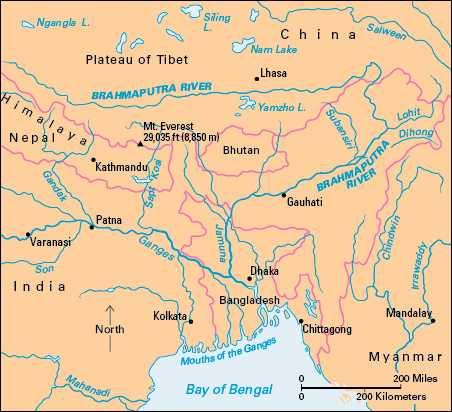Brahmaputra, << `brah` muh POO truh, >> River, is an important waterway of southern Asia. It rises on the northern slopes of the Himalaya in Tibet. After flowing 1,680 miles (2,704 kilometers) through India and Bangladesh, it joins the Ganges River, with which it shares the Ganges Delta. The river has different names in different regions. It is known as the Yarlung Zangbo in Tibet and as the Jamuna in Bangladesh.

Boats can sail up the river about 800 miles (1,300 kilometers) but cannot go farther because of rapids. A bridge erected in 1963 crosses the river near Gauhati, in the state of Assam in India.
The valley of the Brahmaputra, in Assam, has fertile farmland. Large crops of tea, rice, and jute grow there. In rainy seasons, the river floods much of the valley, providing natural irrigation for rice growers. The principal branches of the Brahmaputra are the Lohit, Dibong, Dihong, and Subansiri rivers.
